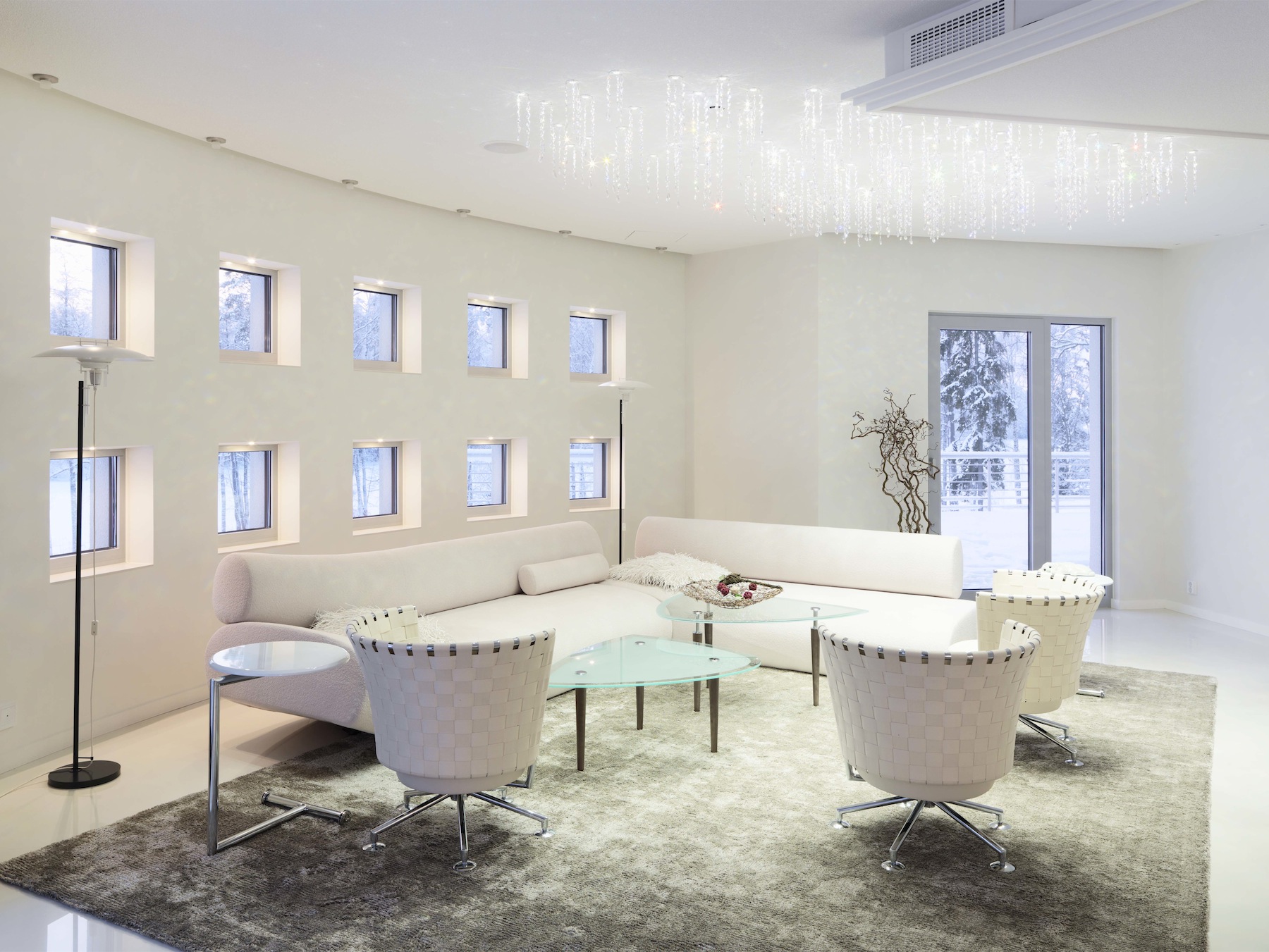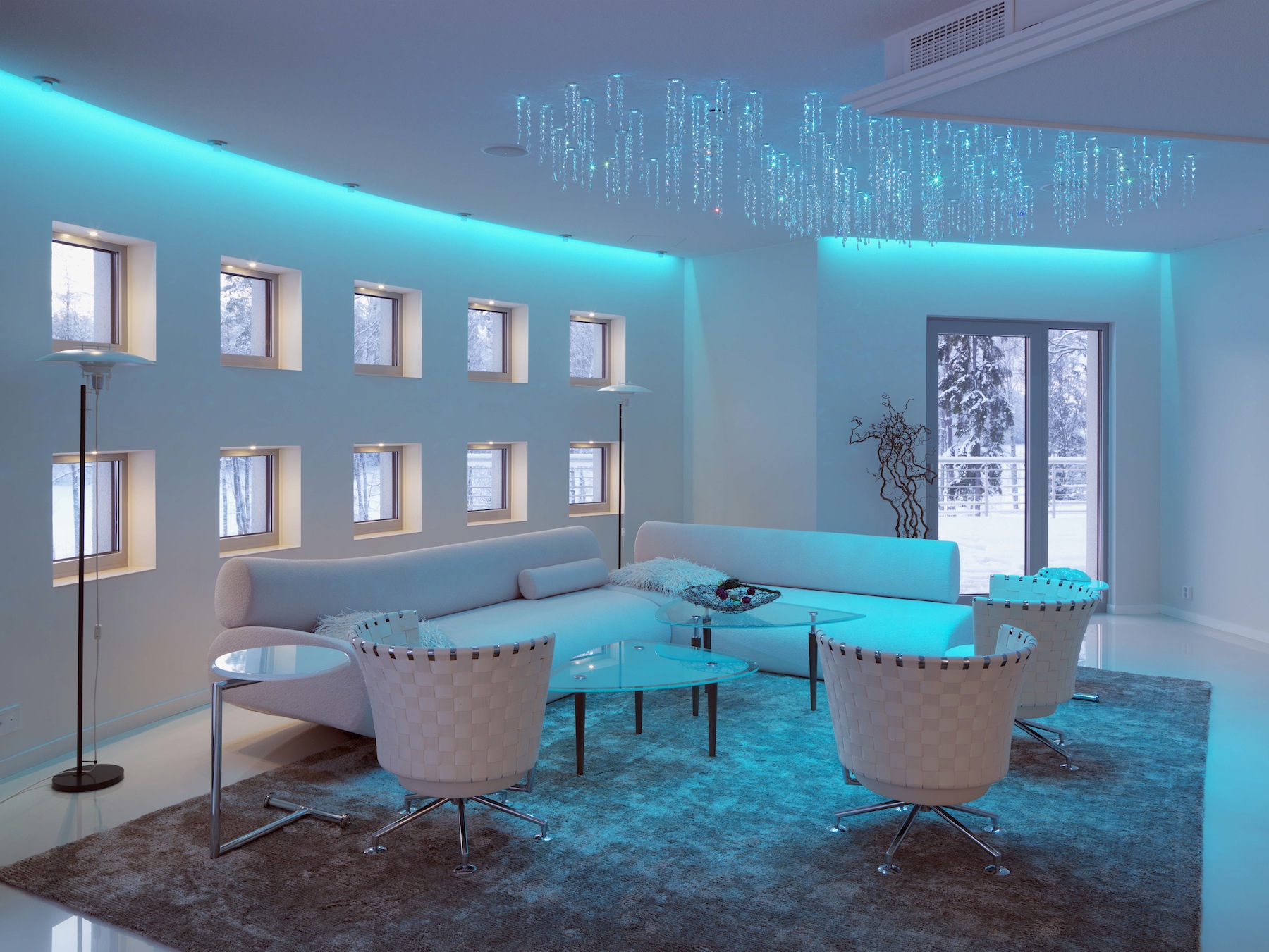Designer: Cariitti Oy/ Kari Ruokonen
Year: 2009
City: Kirkkonummi
Country: Finland
Architect: Kari Ruokonen
Manufacturer: Cariitti Oy
Concept Description
The purpose of smart, energy-conserving lighting is to create wellness. The end result is a lighting design that is a unique source of pleasant experiences and that is tailored for particular moods. This kind of lighting does not just follow recommendations and regulations; it can, in fact, be lighting art. The lighting solutions used in this project support the varied architecture of the building and offer the eyes fascinating experiential journeys through the spaces of the building. The lighting design provides the spaces with different lighting options and dynamic elements (RGB scintillation and animation effects as well as lighting level controls). The atmosphere of the spaces can be adjusted to fit different occasions and moods and to tell a variety of stories about the spaces. In addition to ensuring good visibility, lighting has been used to produce maximally pleasurable experiences and to create comfortable and pleasure-inducing spaces. 90% of the lighting design consists of high-quality LEDs (over 70 Lm/W and a minimum CRI of 90) and optical fibre lighting (with metal halide, halogen and LED projectors). The luminous efficiency of LED lights is usually very good, because LED light is naturally directed in the desired direction and rarely needs reflectors to redirect the light. Because LED lights can be installed near the area being lit, a successful lighting solution can be created with little power consumption. The lighting of this site has been partially integrated into the structures of the furniture or the house itself, so that the light always falls where it is needed for the best possible result. The small size of the LEDs and optical fibres has allowed their installation in locations that are optimal for the lighting design. The rest of the solutions consist of direct, indirect and omnidirectional lighting and spotlighting.
Photographer: Juho Huttunen/ Mikael Lindén



